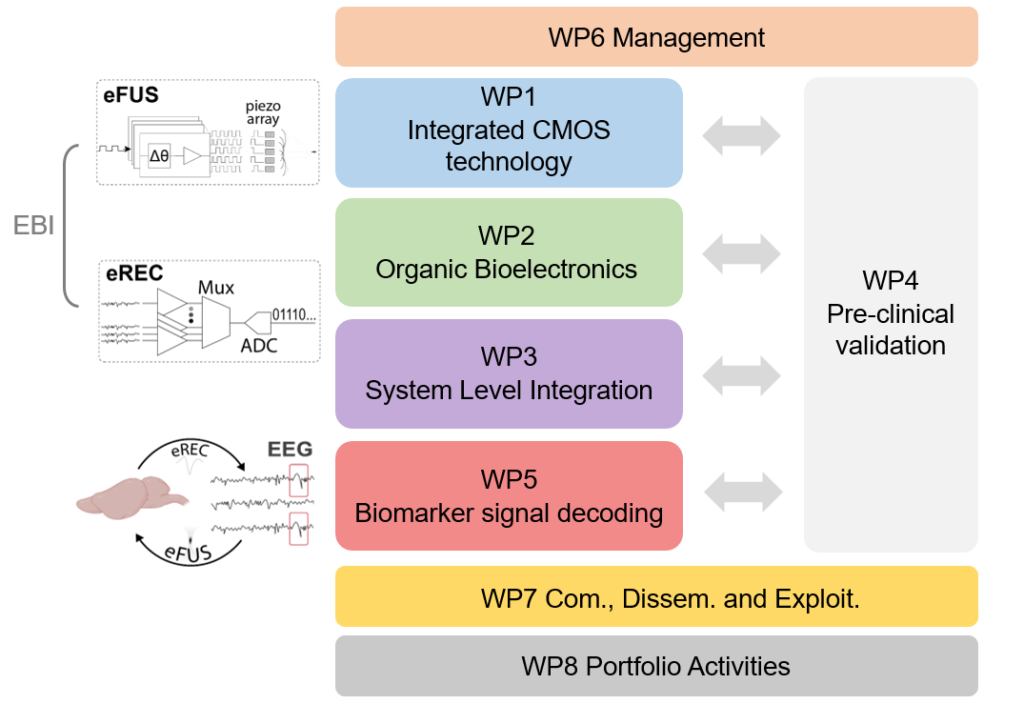Project
Main Aim
The UPSIDE project aims at developing radically new technology to interface with the brain by largely overcoming existing bottlenecks in brain stimulation and recording. This will rely on technological breakthroughs introduced by the consortium members, which establish the groundwork for the innovations introduced in this project. With experts in microelectronics, microfabrication and material science, signal processing, neuroscience and neurobiology, and focused ultrasound, the consortium gathers all the necessary expertise to take on this challenge and develop the next generation of brain interfaces.
Objectives
The UPSIDE project encompasses four research objectives:
Work Programme
To achieve our objectives, the project is composed of eight Work Packages (WP), which are highly interconnected and collaborative. Each Work Package has an overall aim and will be divided into subtasks following a step-by-step approach. Each Work Package is led by the expert in the respective field and involves the collaborative contributions of all partners.

Our consortium will research, develop and test the first EBI featuring focused ultrasound stimulation and high-density EEG recording. This will allow for stimulation of different brain regions along relevant depression neural pathways, with simultaneous behavioral responses in vivo & biomarker classification via EEG signal decoding.
